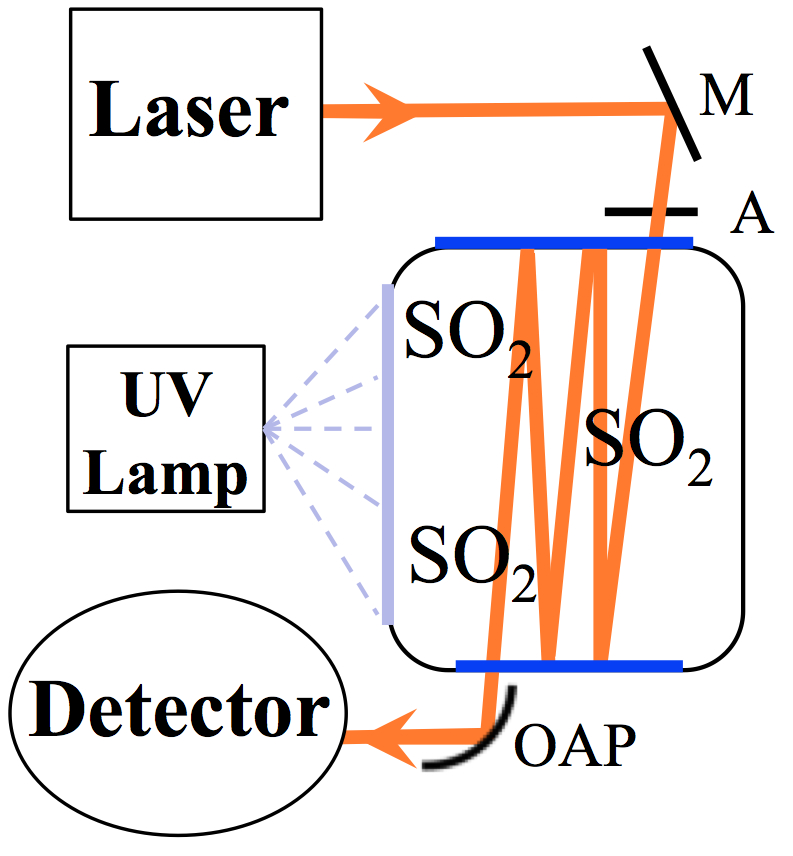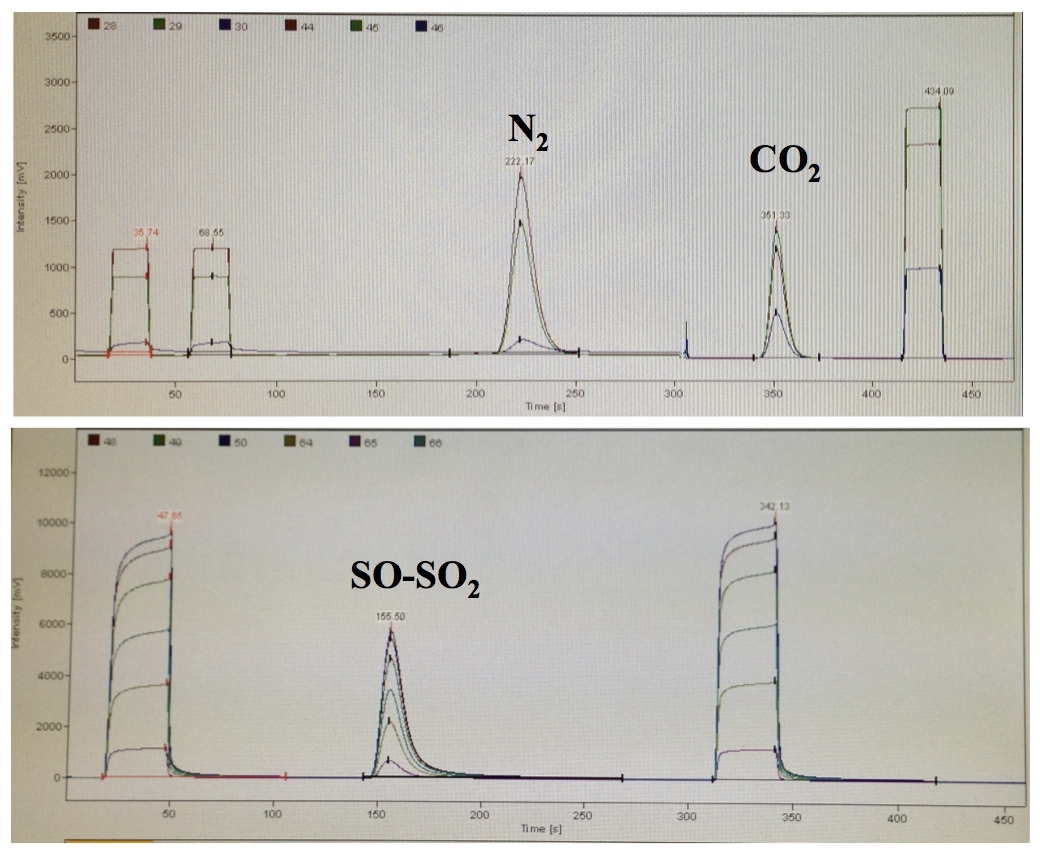Sulfur Isotope Geochemistry
Variations of sulfur isotopes in nature place unique constraints on various geological processes, e.g. the paleo-oxidation state of Earth's atmosphere and biogeochemical cycles. Our research in sulfur isotope geochemistry aims to further advance the application of sulfur isotope tools and improve the interpretation of sulfur isotope signals in the geological records, especially through developments of novel analytical techniques.

Non-Mass-Dependent Sulfur Fractionation Associated with SO2 Photolysis
Sulfur isotope fractionations recorded in the Archaean and early Paleo-proterozoic sediments do not follow the conventional mass dependent relationship. Occurrence of these large non- mass-dependent (NMD) isotope effects has been broadly attributed to the NMD sulfur isotope fractionation associated with SO2 ultraviolet photolysis, and the later absence of these large NMD fractionation signals in sediments younger than ~2.45Gyr has been interpreted to reflect fundamental changes in the terrestrial sulfur cycle and is regarded as one of the most convincing pieces of evidence for the oxidation of earth’s atmosphere around 2.32-2.45Ga. In this project, we are constructing a tunable laser spectrometer and will study the NMD sulfur isotope fractionations associated with SO2 UV photolysis in real-time (Guo and Christensen 2013). Supported by NASA Astrobiology program.
Collaborators:
- Lance Christensen, Jet Propulsion Laboratory
- James Farquhar, University of Maryland

Simultaneous Measurements of Carbon, Nitrogen and Multiple Sulfur Isotope Composition of Organics
Multiple sulfur isotope analyses of geological materials play important roles in our understanding of the environmental and climate conditions on Earth at present and in the past. However, most multiple sulfur isotope studies currently in the literature focus only on inorganic sulfur compounds (i.e., sulfide and sulfate) and are thus inadequate for understanding complete cycling and mass dependent/independent sulfur (MD/IF-S). In this project, We developed a new continuous flow IRMS method for determining the multiple sulfur isotope compositions (δ34S and Δ33S) of organic matters, which allows not only high throughput but also the determination of δ13C and δ14N on the same aliquot of sample (Bowden et al. 2013). Supported by NASA Astrobiology Institute.
Collaborators:
- Marilyn Fogel (PI), University of California-Merced
- Roxane Bowden, Carnegie Institution of Washington
